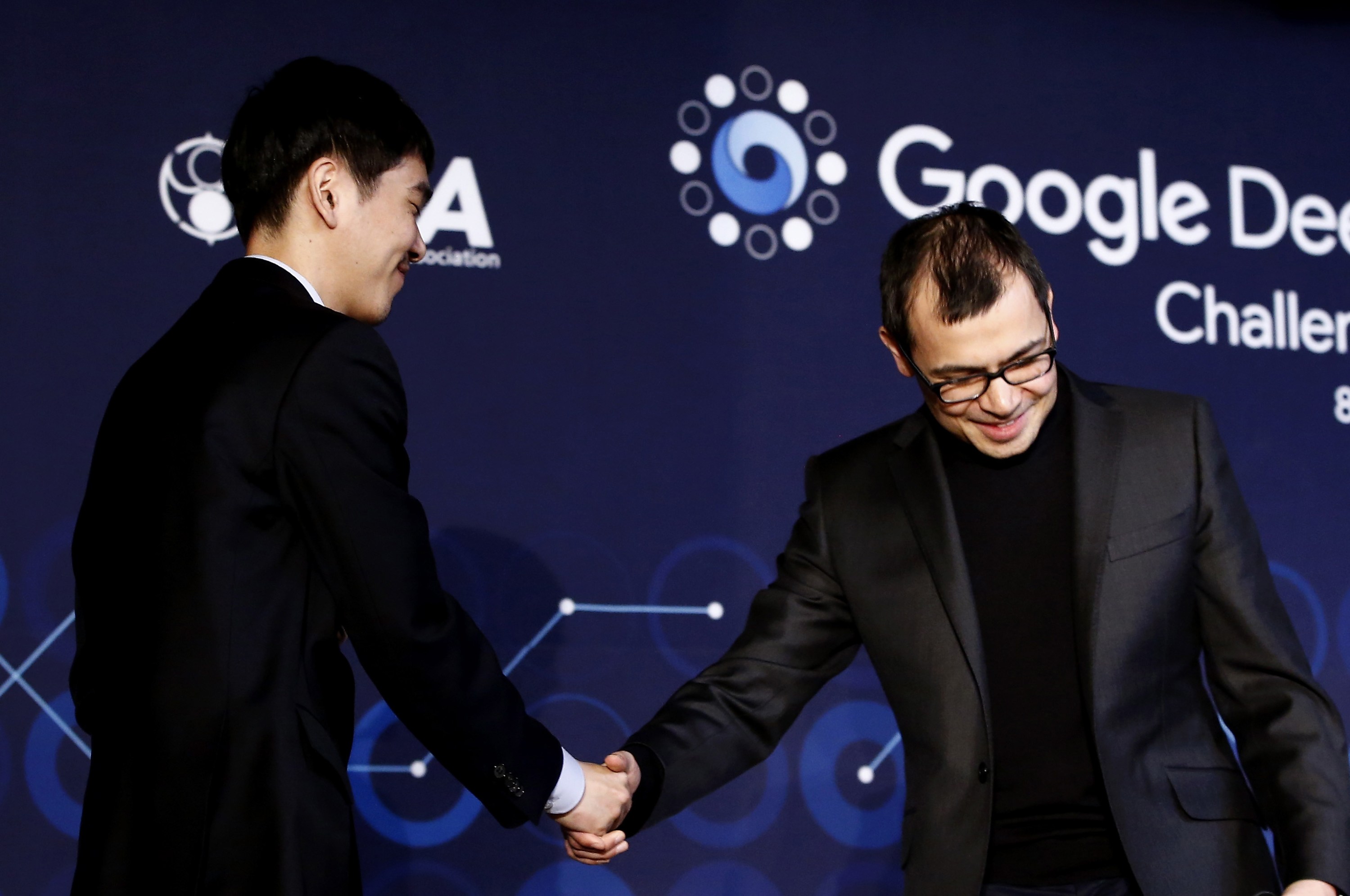Sometimes Legg talks about AGI as a kind of multi-tool–one machine that solves many different problems, without a new one having to be designed for each additional challenge. On that view, it wouldn’t be any more intelligent than AlphaGo or GPT-3; it would just have more capabilities. It would be a general-purpose AI, not a full-fledged intelligence. But he also talks about a machine you could interact with as if it were another person. He describes a kind of ultimate playmate: “It would be wonderful to interact with a machine and show it a new card game and have it understand and ask you questions and play the game with you,” he says. “It would be a dream come true.”
When people talk about AGI, it is typically these human-like abilities that they have in mind. Thore Graepel, a colleague of Legg’s at DeepMind, likes to use a quote from science fiction author Robert Heinlein, which seems to mirror Minsky’s words: “A human being should be able to change a diaper, plan an invasion, butcher a hog, conn a ship, design a building, write a sonnet, balance accounts, build a wall, set a bone, comfort the dying, take orders, give orders, cooperate, act alone, solve equations, analyze a new problem, pitch manure, program a computer, cook a tasty meal, fight efficiently, die gallantly. Specialization is for insects.”
And yet, fun fact: Graepel’s go-to description is spoken by a character called Lazarus Long in Heinlein’s 1973 novel Time Enough for Love. Long is a superman of sorts, the result of a genetic experiment that lets him live for hundreds of years. During that extended time, Long lives many lives and masters many skills. In other words, Minsky describes the abilities of a typical human; Graepel does not.
The goalposts of the search for AGI are constantly shifting in this way. What do people mean when they talk of human-like artificial intelligence–human like you and me, or human like Lazarus Long? For Pesenti, this ambiguity is a problem. “I don’t think anybody knows what it is,” he says. “Humans can’t do everything. They can’t solve every problem–and they can’t make themselves better.”

GETTY
So what might an AGI be like in practice? Calling it “human-like” is at once vague and too specific. Humans are the best example of general intelligence we have, but humans are also highly specialized. A quick glance across the varied universe of animal smarts–from the collective cognition seen in ants to the problem-solving skills of crows or octopuses to the more recognizable but still alien intelligence of chimpanzees–shows that there are many ways to build a general intelligence.
Even if we do build an AGI, we may not fully understand it. Today’s machine-learning models are typically “black boxes,” meaning they arrive at accurate results through paths of calculation no human can make sense of. Add self-improving superintelligence to the mix and it’s clear why science fiction often provides the easiest analogies.
Some would also lasso consciousness or sentience into the requirements for an AGI. But if intelligence is hard to pin down, consciousness is even worse. Philosophers and scientists aren’t clear on what it is in ourselves, let alone what it would be in a computer. Intelligence probably requires some degree of self-awareness, an ability to reflect on your view of the world, but that is not necessarily the same thing as consciousness–what it feels like to experience the world or reflect on your view of it. Even AGI’s most faithful are agnostic about machine consciousness.


